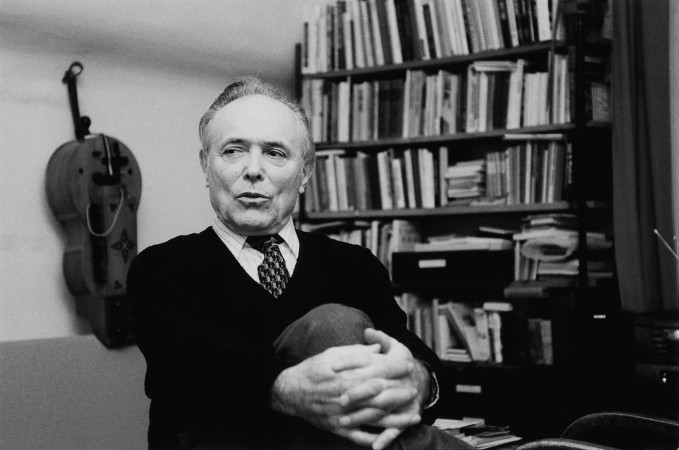1 January 1925, Csíkrákos - 15 July 2022, Budapest
Zoltán Kodály found Hungarians a people who were not particularly fond of instruments in the chapter written on instrumental folk music in his treatise titled A magyar népzene (Hungarian Folk Music), and in a planned music lexicon's article on Hungarian folk music he wrote the following in 1944: ‘The instrumental part of folk music is hardly anything else than arranging vocal melodies for the instruments, either musicians of rural people or gypsies perform that. Some of the czardas melodies produced in the second half of the nineteenth century are also known among rural gypsies, though they have very little to do with folk music.' Nevertheless he considered the scientific examination of the repertoire played by urban and rural gypsies widely important. He recommended the research topic to his young colleague, who graduated from the ethnomusicology department of the Academy of Music in 1956, Bálint Sárosi who accepting his suggestion started working.
Research of instrumental folk music that had been superficial and regarded peripheral earlier was essentially began by Sárosi and became an important and dynamically developing field of Hungarian ethnomusicology by the turn of the millennium, and based on the large amount of data, that had been collected from the end of the 1950s, the research conducted the statements of Kodály cited above proved to be only partial truth. The scientific results of Bálint Sárosi are pioneering and considered to be the basis of our research of instrumental folk music.
He was born on 1 January in 1925, at Csíkrákos, a small szekler village in the eastern edge of Transylvania. He attended his secondary schools at Csíkszereda, and then he enrolled to the Hungarian-Rumanian division of the Pázmány Péter University of Sciences in Budapest. As his homeland was attached to Rumania again according to the peace agreement ending the war he stayed in Budapest after his studies. He applied to the Academy of Music in 1951, to the musicology department the first class of which just began that year. Sárosi chose ethnomusicology and thus became a student of Kodály. The young musicologists and ethnomusicologists graduated in 1956 of the first class of musicology training - began and led by Bence Szabolcsi and Zoltán Kodály - became decisive and internationally renowned representatives of Hungarian musicology in the following decades (among others János Kárpáti, György Kroó, János Kovács as well as Imre Olsvai, Bálint Sárosi and László Vikár). Sárosi was also interested in music-making as a creative process besides the scientific examination of music; therefore he took composition, as well where he graduated as a student of Endre Szervánszky in 1958.
Being an artist and a scientist, composer and ethnomusicologist was an attractive pairing drawing from the great predecessors, however Sárosi gauging his abilities and recognizing the altered conditions and requirements of his age devoted his entire life to science to the research of Hungarian instrumental folk music. Between 1958 and 1968 he was a member of the Folk Music Researcher Team led by Kodály created for editing the Magyar Népzene Tára (Collection of Hungarian Folk Music) under the MTA (Hungarian Academy of Sciences), from 1968 to 1974 he was senior researcher of the Team, between 1974 and 1988 he was head of Department of Instrumental Folk Music of the Institute for Musicology of MTA, and member of the Musicology Committee of MTA and of the Musicology Expert Committee of the Doctoral Council. He defended his PhD thesis in 1966, and was awarded the Doctor of Musicology title in 1990; he has been a titular university professor since 1991. He gave several lectures at international conferences, was invited as a guest professor to the University of Innsbruck in 1985/1986, taught at the University of Göttingen in 1994, and led an educational series in the Hungarian Radio.
He collected both vocal and instrumental folk music, toured the entire Hungarian-speaking territories while making recordings in distant countries, as well: Ethiopia, Armenia and Kuwait. His conclusions and scientific doctrines are validated by his rich field experiences in his writings many of which were published in English and German, as well. His oeuvre consists of several individual volumes, many treatises and recordings, out of which the best known are: Die Volksmusikinstrumente Ungarns (Leipzig, 1967), Cigányzene (Gypsy Music; Budapest, 1971), was published later in English and in German, as well, Zenei anyanyelvünk (Our Musical Mother Tongue; Budapest, 1973), Folk Music. Hungarian Musical Idiom (Budapest, 1986, in German 1990), recording anthology Magyar hangszeres népzene (The Instrumental Folk Music of Hungary; Hungaroton, 1980, revised edition 1998). A series of works summarizing the results of his life achievement were published in the second half of the 1990s: his most comprehensive volume of studies in the field of instrumental folk music titled A hangszeres magyar népzene (Hungarian Instrumental Folk Music) was issued in 1996, then he published the books titled Hangszerek a magyar néphagyományban (Instruments in Hungarian Folk Tradition) in 1998 and Sackpfeifer, Zigeunermusikanten: Die instrumentale ungarische Volksmusik in 1999.
R. P.



